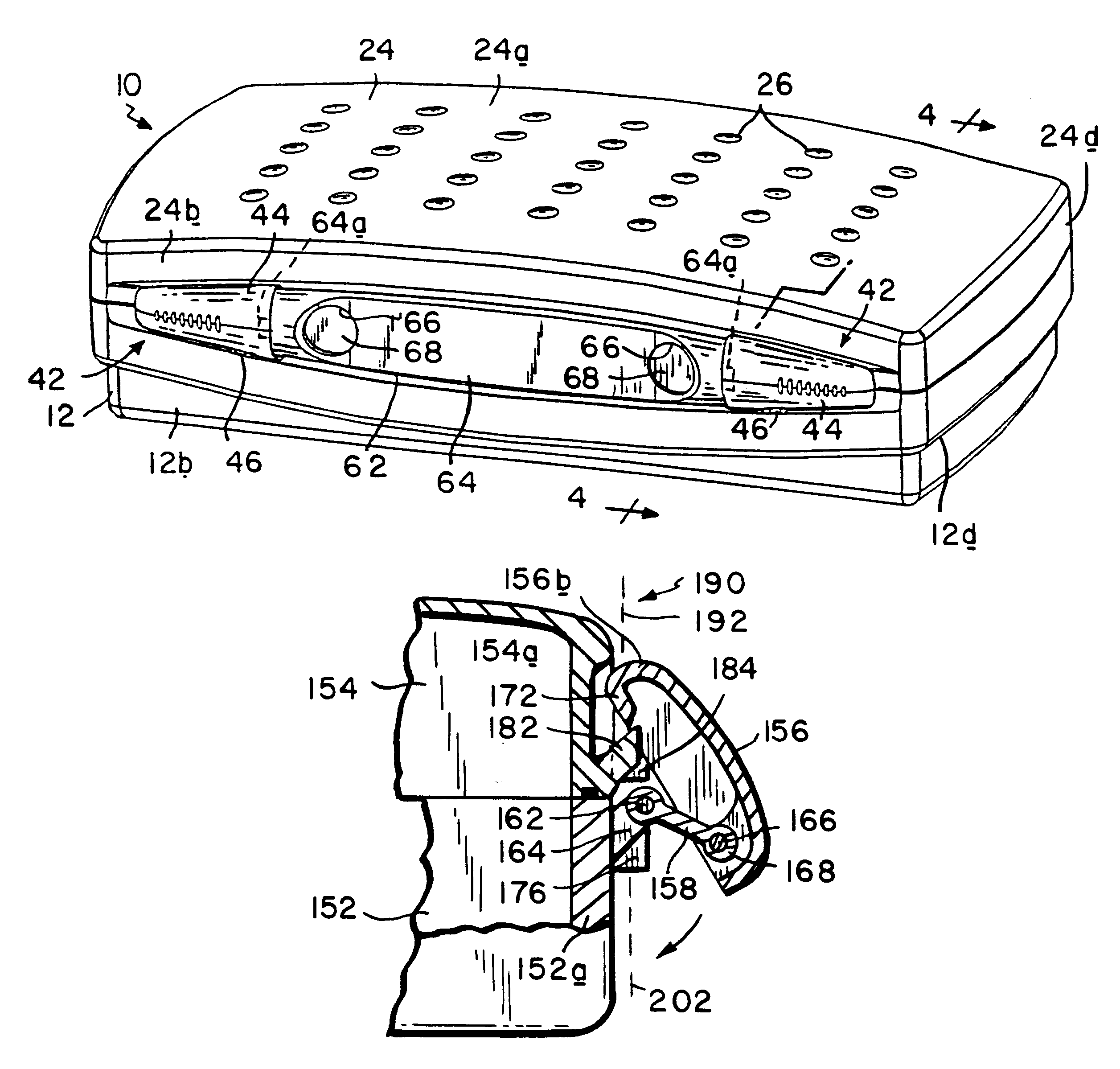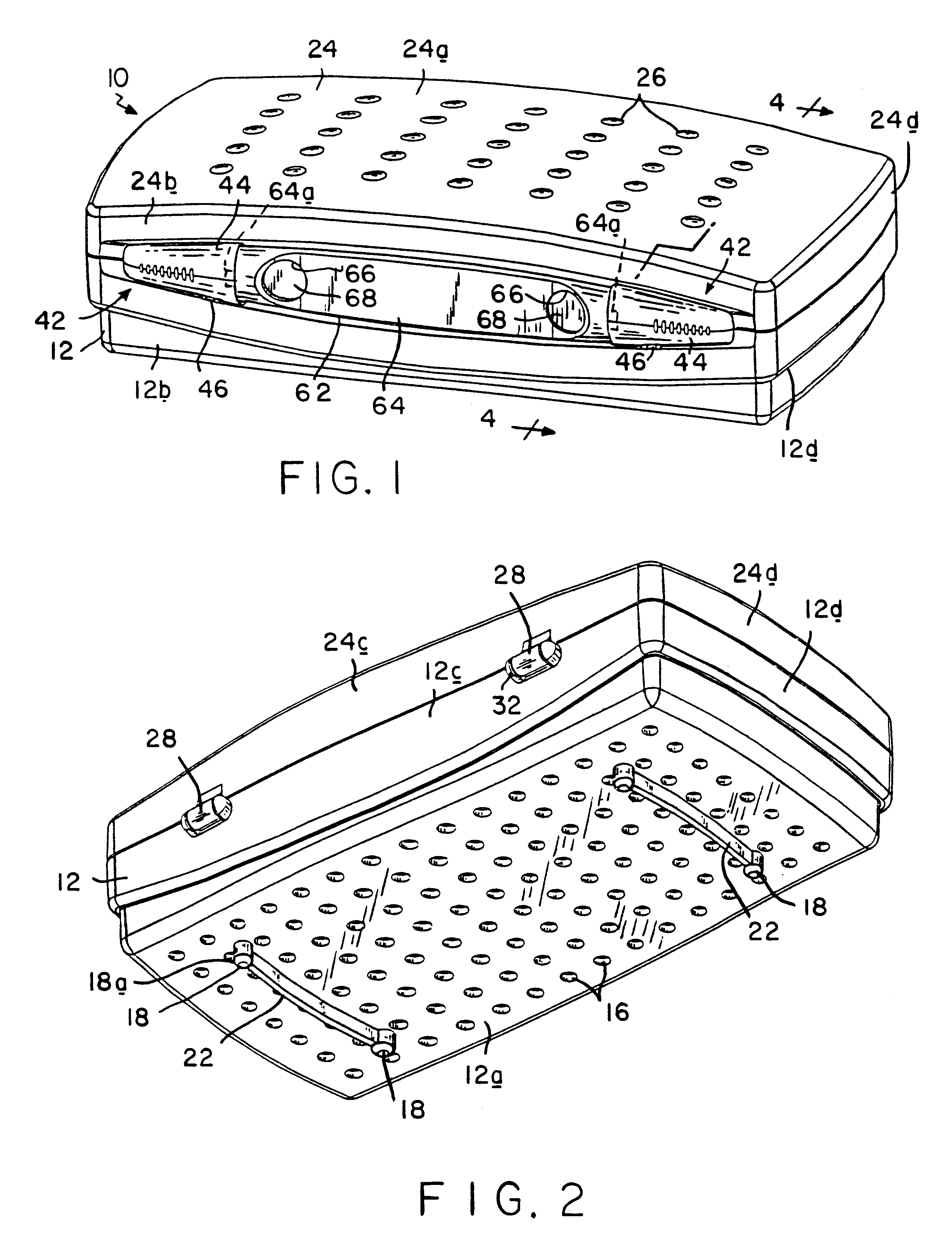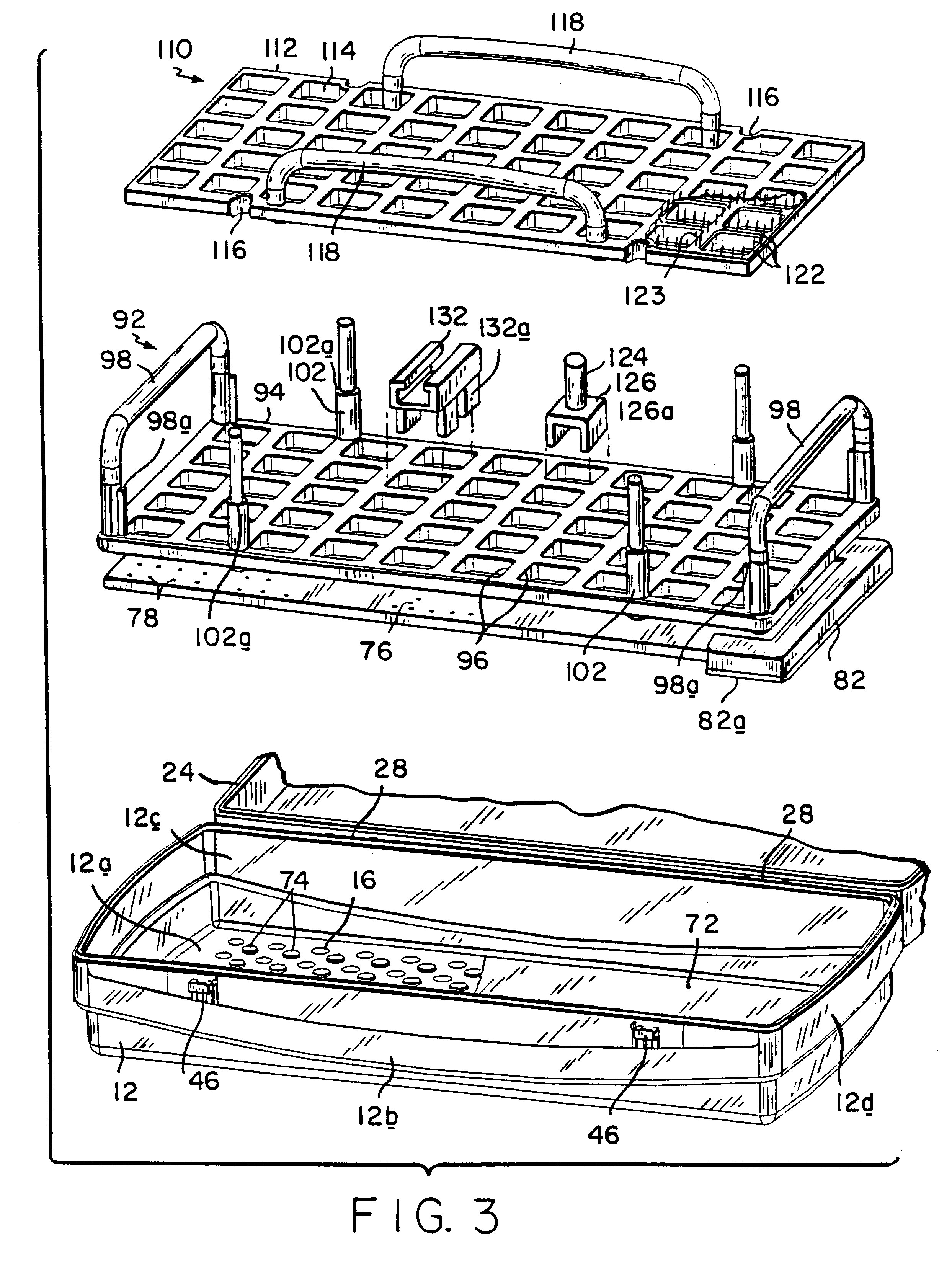Sterilization container
a container and container technology, applied in the field of sterilization containers, can solve the problems of increasing the cost and time it takes to assemble the container, not providing enough open space within the container to allow, and increasing the cost and time it takes to sterilize the container
- Summary
- Abstract
- Description
- Claims
- Application Information
AI Technical Summary
Benefits of technology
Problems solved by technology
Method used
Image
Examples
Embodiment Construction
Referring to FIGS. 1 and 2 of the drawings, our container comprises a housing indicated generally at 10 made of a rugged, impact resistant, medical grade; transparent plastic material. The housing is composed of a generally rectangular receptacle 12 having a bottom wall 12a, a front wall 12b, a rear wall 12c and a pair of mirror-image end walls 12d all extending up from the bottom wall 12a to form an open top box-like structure. As beset seen in FIG. 2, an array of vent openings 16, each being about 3 / 5in. in diameter, is provided in bottom wall 12a, these openings being distributed in columns and rows over substantially the entire area of the bottom wall. Also, pairs of front and rear legs 18 extend down from the bottom wall adjacent opposite ends of receptacle 12, each pair of legs being connected by a depending rib 22 which is specially curved as will be described in more detail later.
Housing 10 is provided with a rectilinear cover 24 which is shaped and arranged to close the ope...
PUM
| Property | Measurement | Unit |
|---|---|---|
| temperature | aaaaa | aaaaa |
| pressure | aaaaa | aaaaa |
| fine structure | aaaaa | aaaaa |
Abstract
Description
Claims
Application Information
 Login to View More
Login to View More - R&D
- Intellectual Property
- Life Sciences
- Materials
- Tech Scout
- Unparalleled Data Quality
- Higher Quality Content
- 60% Fewer Hallucinations
Browse by: Latest US Patents, China's latest patents, Technical Efficacy Thesaurus, Application Domain, Technology Topic, Popular Technical Reports.
© 2025 PatSnap. All rights reserved.Legal|Privacy policy|Modern Slavery Act Transparency Statement|Sitemap|About US| Contact US: help@patsnap.com



